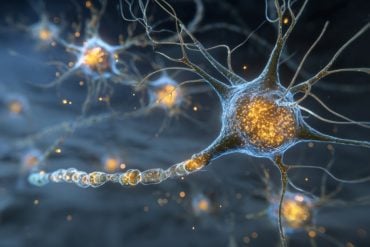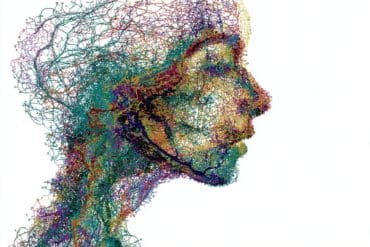Summary: A new study examines the link between teacher burnout and students’ cortisol levels.
Source: University of British Columbia.
Teacher burnout and student stress may be linked, according to a University of British Columbia study.
The study is the first of its kind to examine the connection between teacher burnout and students’ cortisol levels, which are a biological indicator of stress.
Researchers collected saliva samples from over 400 elementary school children and tested their cortisol levels. They found that in classrooms in which teachers experienced more burnout, or feelings of emotional exhaustion, students’ cortisol levels were elevated. Higher cortisol levels in elementary school children have been linked to learning difficulties as well as mental health problems.
“This suggests that stress contagion might be taking place in the classroom among students and their teachers,” said Eva Oberle, the study’s lead author and newly appointed assistant professor with the Human Early Learning Partnership (HELP) at UBC’s school of population and public health. “It is unknown what came first – elevated cortisol or teacher burnout. We consider the connection between student and teacher stress a cyclical problem in the classroom.”

Oberle said a stressful classroom climate could be a result of inadequate support for teachers, which may impact teachers’ ability to effectively manage their students. A poorly managed classroom can contribute to students’ needs not being met and increasing stress. This could be reflected in elevated cortisol levels in students.
Alternatively, stress could originate from students, who may be more challenging to teach because of increases in anxiety, behavioural problems, or special needs. In this scenario, teachers could feel overwhelmed and report higher levels of burnout.
“Our study is a reminder of the systemic issues facing teachers and educators as classroom sizes increase and supports for teachers are cut,” said Oberle.
“It is clear from a number of recent research studies that teaching is one of the most stressful professions, and that teachers need adequate resources and support in their jobs in order to battle burnout and alleviate stress in the classroom,” said UBC education professor Kimberly Schonert-Reichl, the study’s co-author and director of HELP. “If we do not support teachers, we risk the collateral damage of students.”
Source: Corey Allen – University of British Columbia
Image Source: This NeuroscienceNews.com image is adapted from the University of British Columbia press release.
Original Research: Abstract for “Stress contagion in the classroom? The link between classroom teacher burnout and morning cortisol in elementary school students” by Eva Oberle and Kimberly A. Schonert-Reichl in Social Science & Medicine. Published online April 24 2016 doi:10.1016/j.socscimed.2016.04.031
[cbtabs][cbtab title=”MLA”]University of British Columbia. “Stress Contagion Possible Among Teachers and Students.” NeuroscienceNews. NeuroscienceNews, 27 June 2016.
<https://neurosciencenews.com/education-stress-contagion-4580/>.[/cbtab][cbtab title=”APA”]University of British Columbia. (2016, June 27). Stress Contagion Possible Among Teachers and Students. NeuroscienceNew. Retrieved June 27, 2016 from https://neurosciencenews.com/education-stress-contagion-4580/[/cbtab][cbtab title=”Chicago”]University of British Columbia. “Stress Contagion Possible Among Teachers and Students.” https://neurosciencenews.com/education-stress-contagion-4580/ (accessed June 27, 2016).[/cbtab][/cbtabs]
Abstract
Stress contagion in the classroom? The link between classroom teacher burnout and morning cortisol in elementary school students
Objective
The purpose of this study was to explore the link between classroom teachers’ burnout levels and students’ physiological stress response. Drawing from a stress-contagion framework, we expected higher levels of teacher burnout to be related to elevated cortisol levels in elementary school students (N = 406, 50% female, Mean age = 11.26, SD = .89).
Method
Classroom teacher burnout was assessed with the Maslach Burnout Inventory modified for teachers. Salivary cortisol was collected as an indicator of students’ hypothalamic–pituitary–adrenal (HPA) functioning. We collected salivary cortisol in children at 9 a.m., 11:30 a.m., and 2 p.m. in the classroom setting.
Results
Using Multilevel Modeling, we found that children’s morning cortisol levels significantly varied between classrooms (10% variability). Higher levels of classroom teacher burnout significantly predicted the variability in morning cortisol. Teacher burnout reduced the unexplained variability in cortisol at the classroom level to 4.6%.
Conclusion
This is the first study to show that teachers’ occupational stress is linked to students’ physiological stress regulation. We discuss the present findings in the context of potential stress contagion in the classroom, considering empirical and practical relevance.
“Stress contagion in the classroom? The link between classroom teacher burnout and morning cortisol in elementary school students” by Eva Oberle and Kimberly A. Schonert-Reichl in Social Science & Medicine. Published online April 24 2016 doi:10.1016/j.socscimed.2016.04.031






